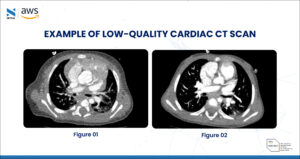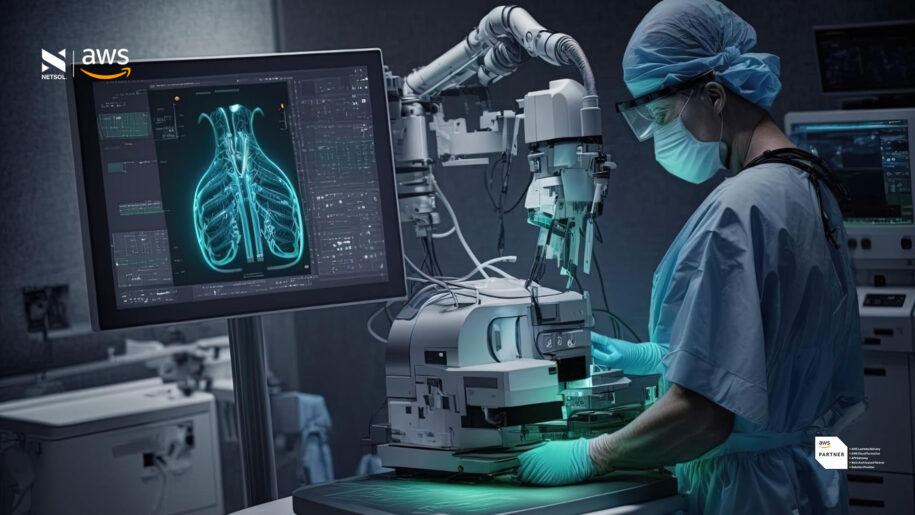Thanks to the power of artificial intelligence (AI) and generative algorithms, the world is experiencing remarkable transformation and advancements in the medical imaging field. One particularly cutting-edge approach to making waves is “Stable Diffusion-Based Solutions.” This fantastic technique could revolutionize capturing, processing, and generating medical images. In this blog post, we’ll deeply dive into the fascinating world of stable diffusion-based solutions and explore how they work alongside generative AI to take medical imaging to the next level.
Basics of Stable Diffusion
Before diving into the applications of stable diffusion in medical imaging, it is crucial to understand the complex mathematical concept behind it.
Stable Diffusion is an innovative Generative AI-based model that enables users to generate captivating, high-quality images, videos, and animations from simple text and image prompts. Powered by state-of-the-art diffusion technology, this model produces photorealistic outputs that are both unique and visually stunning. So, what’s the technology?
Stable Diffusion uses latent space, significantly reducing processing requirements and making running the model on any desktop or laptop equipped with GPUs possible. Moreover, the model is highly customizable and can be fine-tuned to meet specific needs.
In the context of healthcare, Stable diffusion is transforming data in a controlled manner using carefully crafted noise. This process is gradual and carefully executed to generate high-quality, realistic images. The noise added to the image is designed to be non-disruptive, and its addition is carefully controlled to achieve the desired outcome.
Stable diffusion is a valuable tool for generative AI because it generates hyper realistic medical imaging without compromising quality. The industry can better diagnose patients treated with various critical conditions with high-quality medical imaging.
Stable Diffusion Fusion with Medical Imaging
Stable diffusion and its powerful medical imaging are game changers for the healthcare sector. Here’s how both are stirring a revolution, assisting healthcare professionals in diagnosing patients accurately.
Data Augmentation
Medical imaging datasets are limited and thus require generating diverse datasets through stable diffusion and generative AI models. This approach adds contrast to images, improving the handling of real-world variations while adding model reliability and accuracy.
Noise Regularization
Achieving precision in the medical field is paramount, as even a slight error can have drastic consequences. Stable diffusion offers the attainment of accurate results through noise regularization. The images produced become more stable and reliable, allowing for better interpretation and diagnosis, ultimately reducing uncertainty and enhancing the process of accurate diagnoses.
Image Enhancement
Enhancing and generating images is of immense value. With advancements in stable diffusion and generative AI, researchers and clinicians can now improve the quality of medical images to an unprecedented level. It makes it easier to identify subtle complexities and anomalies that might have gone unnoticed previously.
Diagnostic Support
Stable diffusion-based generative AI models have proven to be a valuable tool for medical professionals by analyzing incomplete or low-quality scans. These models can generate synthetic images that accurately depict the medical condition being examined, allowing medical practitioners to make more informed diagnoses and monitor the progression of medical conditions with greater accuracy and confidence.
A Case Study on Stable Diffusion in Medical Imaging
Medical imaging is an indispensable component of modern healthcare, enabling physicians to detect and diagnose various diseases more accurately. Over the past few years, generative models such as GANs and VAEs have been used for producing realistic medical images. Despite their potential, these models’ limitations hinder them from producing the desired result.

Medical professionals require a reliable and efficient generative model that can produce realistic medical images to enhance their ability to analyze, diagnose, and treat diseases.
The healthcare sector utilizes stable diffusion to generate medical images with remarkable precision, realism, and high-quality pictures with intricate spatial details.
In this case, the stable diffusion model used the Fokker-Planck equation to simulate the diffusion process of the image’s probability density function (PDF). A diffusion kernel was applied to the PDF at each time step to generate a new image. The kernel captured spatial information and learned from data during training.
Stable diffusion generated high-quality and diverse images by accurately capturing complex spatial information and overcoming the mode collapse problem through diffusion.
Future of Medical Imaging with Generative AI Stable Diffusion
The combination of stable diffusion-based solutions and generative AI is leading to significant advancements in medical imaging. It is expected to witness breakthroughs in the accuracy and speed of diagnostic imaging and improvements in the detection and treatment of diseases.
Realistic 3D Imaging
By utilizing stable diffusion, it is possible to create 3D medical images that are realistic and highly accurate in their depiction of various anatomical structures. This advanced technique enhances the diagnostic capabilities of medical professionals by providing a more detailed and comprehensive view of the affected areas, ultimately leading to better patient outcomes.
Improved Training Data
Generating accurate training data for AI models is crucial in healthcare. However, obtaining precise patient data can be daunting due to several reasons, such as privacy concerns and the limited availability of data. To overcome this challenge, stable diffusion techniques can be used to generate synthetic medical images that can be used for training AI models. These techniques can produce high-quality photos with realistic features, providing a reliable alternative to real patient data.
Personalized Medicine
By utilizing custom, synthetic images based on individual patient data, medical imaging can be tailored to the specific healthcare needs of each patient. This approach enhances the accuracy of diagnoses and treatment plans and ensures that patients receive the most effective and efficient care possible. With personalized medicine, patients can be confident that their healthcare is optimized for their unique needs and circumstances.
Faster Diagnoses
Medical professionals can provide faster and more accurate diagnoses due to technology that has led to enhanced image quality and noise reduction. These improvements allow for a more precise and detailed view of the body’s internal systems, enabling doctors to identify potential health issues quickly and precisely.
Fusion with Brighter Future for Better Medical Advancement
The integration of stable diffusion-based solutions with generative AI is revolutionizing the field of medical imaging. This cutting-edge technology has the potential to substantially improve the accuracy of diagnoses, enhance the quality of images, and provide new and innovative ways to address healthcare challenges. As researchers and AI developers continue to push the boundaries of what is possible, we can expect a future where medical imaging becomes even more powerful, versatile, and indispensable, ultimately benefiting patients and medical professionals.
Interested in knowing more about how Generative AI and Stable Diffusion can change the game for the healthcare sector? Get in touch with our NETSOL representative and learn more!



Leave a Reply